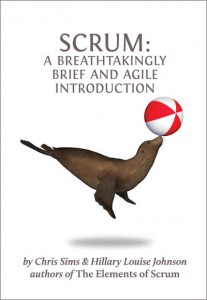
If you want a quick summary of my “Why We Fail” book in the form of two AI-generated voices discussing the seven main types of customer experience failure, then this podcast episode is for you.

If you want a quick summary of my “Why We Fail” book in the form of two AI-generated voices discussing the seven main types of customer experience failure, then this podcast episode is for you.

This recent Klarna story is fascinating:
The fintech firm Klarna is severing its relationships with two of the biggest enterprise software providers in favor of automating its services with AI. And the company says it could potentially eliminate more.
Klarna co-founder and CEO Sebastian Siemiatkowski recently explained the rationale in a conference call, the financial outlet Seeking Alpha reported. Klarna is no longer using Salesforce, a platform that aggregates and packages sales and marketing data for businesses. The company has also removed the HR and hiring platform Workday from its tech stack
The skepticism in the article feels valid. But let’s pretend for a moment there’s something here. How might they “shut down Salesforce”? I imagine they could move their their data elsewhere, sick an LLM on it, and then query it. “Show me customers with purchases under $1MM.” And “Add a note that we followed up with Pat Peterson at Vandalay yesterday about the integration…”
From a design perspective, it feels like replacing the layouts and navigation of Salesforce with queries (and if you’ve ever used or tried to design for Salesforce, that’s not necessarily a bad thing). When I imagine what that might feel like as an experience, one of the few touch points I have is Star Trek. Their AI was pretty badass, but they also had a bunch of screens they referred to silently. The Enterprise software designer must have had some principles that dictated when they needed screens and when they could rely on spoken queries. And now that we’ve reached this point where people are ditching their screens for AI (or considering it at least) we’ll probably need those guidelines soon enough.
As homework, I pulled up Make It So: Interaction Design Lessons from Science Fiction by Nathan Shedroff & Christopher Noessel. Brilliant people as they are, they already reduced these lessons to clear guidelines, for example:
Lesson: put information in the channel it fits best
Should a bit of system information be conveyed through audio or spoken language? Though every piece of content needs to be considered in its particular context of use, a good rule of thumb is to put peripheral information in peripheral channels. Since Captain Kirk could feel confident that his communicator was on when he heard voices coming from it, and off when he heard nothing or got no response, the double beeps that signal opening and closing communications can be considered peripheral and can be signaled as system sounds instead of a voice that would convey the same information. Conversely, if the system needs to convey that 10 seconds remain before the whole place is gonna blow, it could be conveyed as a rising tone, but the information is important enough that the discreteness and omnidirectionality of language is required.
There’s a lot to be said about how to secure our online information while providing a good experience; hasn’t anyone written this book yet? In any case, I think a good, uncommon, guideline would be:
Do not use human memory
To remember and recall takes work, and I’d rather not expend my precious attention and cognition on computers. And, human memory is fallible. Most passwords break this guideline, but we now have biometrics and password managers to provide security without relying on memory and it’s time our security practices catch up to the technology.
Two-factor authentication, similarly, feels like a lazy, flawed approach which requires too much human work.

In this video I listen to the sound as it’s used in real life, talk about what the sound is intended to accomplish, and then give it a sound score. And then I try to improve on it.
RGT is a great, freemium service that’s fun for cycling indoors. It connects to your bike and let’s you cycle through one of several virtual worlds along with other people. If you’ve heard of Zwift, it’s similar.
When I designed software for personal finance, I thought a lot about helping people simplify and understand their cash flow. One method I created is an exceedingly simple way to track spending on projects that my wife and I have been using for years.
Most people track their money by tracking their spending. On the computer, there are websites such as Mint or You Need a Budget that will track everything you buy down to the cent, help you categorize every one of those expenses, and track it all on a regular basis.
We think that’s insane. Well, maybe once in a while it’s good to do a financial checkup to revisit where you’re spending your money. But really, all that time tracking expenses could be better spent making money or enjoying life.
Here’s the secret to how we do it: Instead of tracking spending, we track buying. We do this with our Things To Buy List.
Why don’t we track spending? We don’t track spending on fixed costs like our mortgage or the water bill since those 1) don’t change much and 2) need to be paid whether we like it or not. Any large expenses we’ve saving for, from retirement to the kids’ college education, is automatically deducted from our account. What’s left is money we can use for incidental expenses such as home projects, and for this task we want to track our buying. Tracking stuff we want to buy is also more fun than tracking money that’s already left us!
To track what we buy, we start by creating a list of things we want to buy. We’ll do this someplace digital so that it’s easy to share, re-prioritize, and cross items off the list. We use a wiki, but you could use a Google Doc, a shared to-do list, or a paper list on your refrigerator. Here’s what the top of our list actually looks like right now:

Then, as we have time to work on these projects, we’ll look at our checking account to see how much extra money is there and use it to buy things starting at the top of the list.
That’s it. That’s our entire method: Check the account, buy the stuff, and occasionally update the list.
Could a Things to Buy List work for you?
In the field of user experience design, we research users and often talk about the user pain points we’ve observed. When I use pain here I don’t mean inconveniences, as when I can’t find just the right streaming music playlist to match my mood. I mean tasks that emotionally hurt, such as knowing you need to file a timesheet by a deadline but you can’t figure out how do that with the enterprise timesheet software you’re forced to use, to the point you are cursing the software.
The phrase “pain points” implies discrete things or points in time. But in some cases users are interacting with a system on an ongoing basis and that pain is continuous. Usually when someone is in pain for an extended period we call it suffering. When it comes to our bodies we make this distinction between minor pain and suffering all the time. A minor pain we tolerate and wait for it to go away. When we’re suffering we go to the doctor.
When designing for users of software, differentiating between minor pain and suffering helps me make different choices about how to design solutions.
One consideration is how long to spend designing a solution. If we reduce either the pain or the time someone is in pain then we reduce the suffering. But this can involve a trade off: we can design an amazing solution that removes all users’ pain, but that could take a lot of time. We could design something and release it to users quickly, but it might only relieve part of their pain. Or we might find a middle road where we alleviate the worst pain first and then gradually alleviate the rest with subsequent releases.
Mathematically we can phrase it like this:
Pain x Time = Suffering
This tradeoff also helps me think about using the appropriate design methods. Let’s say for example that the scope of my problem is large, perhaps helping the U.S. government create a better way for residents to understand and file federal taxes. I would need a design methodology that can encompass many types of users, information, and interaction, such as service design. If preliminary research revealed that the most user suffering is in knowing how much to pay in estimated taxes, then I might focus on that problem. In order to alleviate that particular suffering quickly I would need a design methodology that helped me rapidly find a solution, such as Lean UX.
I’ll stretch this analogy further to illustrate how I think of allocating resources based on design needs. Near where I grew up is a large hospital system that offers patient care on different time horizons. One, the hospital has an emergency room to triage critical patient needs. Two, it has doctors who can provide scheduled, annual checkups. Three, it has specialists who provide larger procedures such as surgery. And four, it has research labs where it can develop new cures.
Now imagine there’s a tragic accident nearby. The hospital could allocate more resources to the emergence room to handle demand. Alternately, imagine a new disease is causing a pandemic; the hospital could allocate more resources to the research labs for find a cure.
Similarly, my team allocates resources depending on the kinds of problems our users have. One, we embed designers in agile feature teams to quickly alleviate critical user suffering. Two, we perform proactive testing to track how usability has changed over time. Three, we occasionally dedicate a team to a large change, such as an information architecture change. And four, we do research to arrive at overall design patterns such as infinite scrolling vs pagination. Our job titles and work assignments are fluid enough to respond to (constant) change.
All that to say:
Recently the web turned 30 years old, and I realized that this blog was started almost exactly 10 years after the web, making it 20 years old this month. And maybe that makes it a good time to start blogging again? Not really.
Although I am losing faith in Medium and Facebook as places to share my thoughts, and it’s comforting to know I have this place that’s all my own to do as I please, free of ads and unpleasant people. Let’s write and be pleasant!
I was talking with some folks the other night, one had written three books, another five. “It’s like having a baby,” they said, “it hurts so much you swear you won’t do it again, but you forget the pain.” I can proudly declare I stopped after one book. But but… there’s all these books that don’t exist yet but should. Who will write them?
One of those books that doesn’t seem to exist is the small (small as in fits-in-your-pocket small) book for product managers, programmers, and business people to understand how human-centered software design gets done. By that I don’t mean how to start doing human-centered software design, there’s plenty of good resources for that (e.g.). And there’s good resources for people willing to devote the hours of reading it takes to get through a 350+ page book (e.g.). But in my experience people just don’t have that much time to devote to anything outside their area of focus unless they’re changing careers.
My inspiration is this:

Scrum: A Breathtakingly Brief and Agile Introduction is a wonderful little book that does exactly what it says on the label. It slips neatly into your pocket for reading anywhere anytime. There’s even space in there for a few useful illustrations. As a non-programmer needing to understand how my programmer colleagues are working, it’s perfect. I want to give them the same kind of book to understand what I do.

I just wrote up some of the lessons we learned building a prototype of a personal financial planning service: What Do Consumers Really Want From Financial Planning?

Working in the fast-changing world of digital product design, there’s always some new and exciting tools and techniques to learn. The flip side of this coin is that you must keep learning to keep up with the industry or your skills become irrelevant.
So naturally it would be helpful to know how our practice will change in the future so we can figure out what to learn next. This article is my attempt to look into this future.
I’m at an inflection point in my career of building digital services and reflecting on two things:
While the thoughts are still in flux I’m going to set them down here and stew on them a bit.
Here’s a chord chart for instruments that have three strings tuned D-A-D like the Seagull Merlin, Grand Strumstick, & DAD Dulcimers. Also known as key of D, or diatonic D.
I had a few goals when designing this:
In case you’re new to tab/tabulature, this one is set up like guitar tab: the lowest string is on the left, the highest string is on the right, the dots indicate at which fret to put your fingers.
It’s a brave new world of auto loans out there with many customer-friendly features that traditional banks lack. Some of the new student loan companies for example will pause your payments if you’re out of work. How nice is that?
So when I was researching loans for a used car we wanted to buy, I looked at all my options. The Simple Dollar’s review of auto loans was especially helpful. We ended up with a loan from LightStream (aka SunTrust) because they gave us a great rate and would allow us to buy from a private seller which saved us a few thousand dollars.
Oddly enough we didn’t realize until after we registered the car that the bank gave us an unsecured loan. Normally a car loan is secured by the car, so if you don’t pay the loan the bank takes back (repossess) the car. But because our credit history and salary history is very good, they gave us an unsecured loan. Why? I don’t know, maybe it’s simpler and less expensive for them.
What this also means is they don’t have a lien on the title. And when we registered the car at our local New Jersey motor vehicles office they didn’t believe this because 99.99% of car loans are secured. The solution? We had to get a notarized letter from the bank to prove it the loan was unsecured and there was no lien on the title. Four DMV trips later we have the title!
I like how this School of Life video reframes what a drug is and encourages us to embrace the drugs that make our life better.
And that got me thinking about which drugs I enjoy. When I was younger I liked some which for several reasons we won’t mention. My needs are tamer now, I can think of
In my continued quest to simplify my life and reduce expenses, I discovered the MVNOs like Ting and Consumer Cellular that lease infrastructure from the big carriers have come of age. They have straightforward pricing plans that are a fraction of the cost, better designed websites, and better customer service as reported by Consumer Reports.
Although I like Ting better as a company, our GSM-network iPhone 4s’ would have slowed down on their network. By going with Consumer Cellular I stay on the AT&T network and cut my bill in half ($45 vs $90) for two phones. That’s even $10 cheaper than Ting.
The process is easy. Order online, swap in the free SIM card they send, and give them a call to activate service. There was a bit of fidgeting to get voice mail re-setup etc. but now it’s working just as it did before, but cheaper.
And here, in a single screen, is what makes them different. I hear usage alerts are available on AT&T. I’ve read articles about them. I’ve seen links to that effect on their customer website. But I (a software designer) was never able to set them up. But here’s what they look like on Consumer Cellular:
Not only is the design clear as day, they default the alerts to ALL ON. They’d rather you be in-the-know and have plenty of notice before you go over your plan so you can decide to pay-per or change your plan. Love that.
By contrast, the number AT&T displayed on their website to cancel their account was only for new accounts. And when I tried to use the online chat instead I get this:
And that number is actually only for reseller agents. I’d tell you how it all turned out but I’m still on hold with them.